The new Ferrari 12Cilindri will cost from £336,500 in the UK - making it one of the firm's most expensive series production cars yet.
That's the base price for Ferrari's new V12-engined flagship, but being liberal with the extensive options list would nudge the list price well clear of £400,000.
The open-roof 12Cilindri Spider, for example, adds another £30,000 to take the list price to £366,500 - making it one of the most expensive convertibles in production.
Then you can choose the colour of the brake callipers for £1512, tint the rear windows for £3079 and add ventilated, massaging front seats for £8957.
Various pieces of interior and exterior trim can be swapped for carbonfibre alternatives, too, including the air filter box (£3583), the rear boot trim (£2800), the mirrors (£3359) and the inner door panels (£5039).
Meanwhile, adding the Personalisation Pack – which allows the owner to specify bespoke colours and materials for various surfaces inside and out – costs £14,074.
Choosing your own special exterior colour on demand will add £39,624 - the most expensive option.
Ferrari will provide the 12Cilindri with a four-year warranty in the UK, compared with three years in other global markets, and will carry out all routine servicing for the first seven years of the car's life.
The first cars will launch in Europe in the coming weeks, before UK owners start taking delivery early next year.
Since the 12Cilindri was revealed, Aston Martin has revealed a direct contender in the form of the new Vanquish, which succeeds the DBS with an 824bhp V12 powering the rear wheels and performance figures broadly in line with its Italian rival.
The primary technical difference between the two cars is that the Aston's V12 is twin-turbocharged while the Ferrari's V12 continues to breathe freely - but with 819bhp, it's still the most powerful pure-ICE car the Italian firm has yet put into series production.
Revealed on the sidelines of the Miami Grand Prix earlier this year to commemorate Ferrari’s 70th anniversary in the US, the 12Cilindri “opens a new chapter in Ferrari history”, according to the brand’s chief marketing and commercial officer, Enrico Galliera.
Taking up the mantle from the 812 Superfast, the 12Cilindri ramps up the power, adopts a bold new styling language and introduces a raft of important new technologies. But, crucially, it sticks with Ferrari’s 6.5-litre naturally aspirated V12 after the Maranello firm invested heavily in making its biggest engine compliant with new emissions regulations in order to cater to continued demand.
Galliera said: “It is already compliant to Euro 6e [emission standards], so it is possible to keep selling the car all over the world for the time being and then we will see what happens in the future.
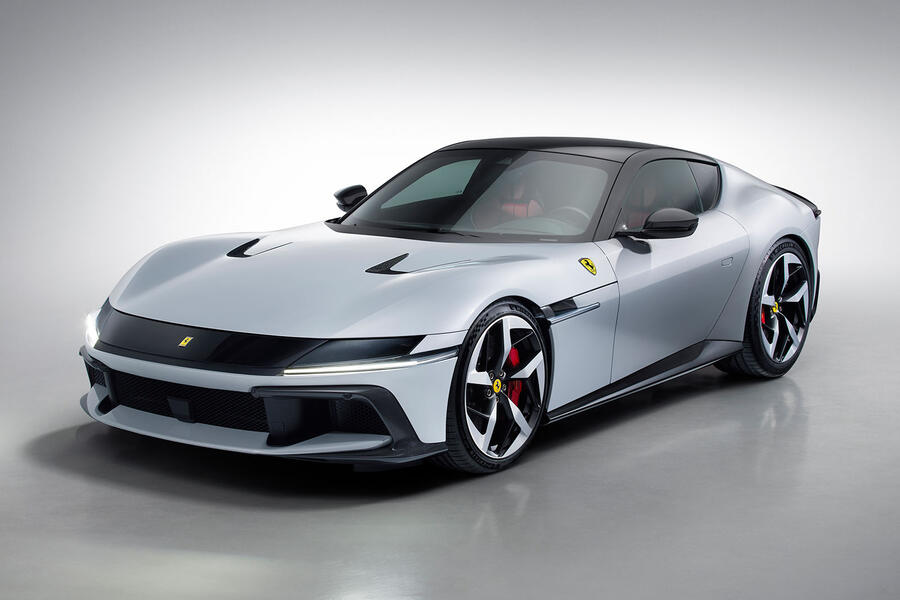
“The work that has been done on this engine to remain performant and compliant with the regulation is absolutely stunning, which is probably one of the reasons why there are not many manufacturers that keep investing in the V12 engine.”
Galliera would not disclose projected sales figures for the new GT flagship “because we don’t believe our business is done by numbers”.
The company previously revealed the Purosangue SUV would account for less than 20% of its total volume, but Galliera said it only publicised this statistic to show that “we were not becoming a utility vehicle producer”.
He emphasised that Ferrari’s growth ambitions are not tied to increases in volume for particular model lines, but rather will come about by expansion into new segments and an increase in profitability per car sold, suggesting the 12Cilindri will be built in similar volumes to the 812 it replaces. Aston has confirmed it will only build 1000 examples of the Vanquish.
Design
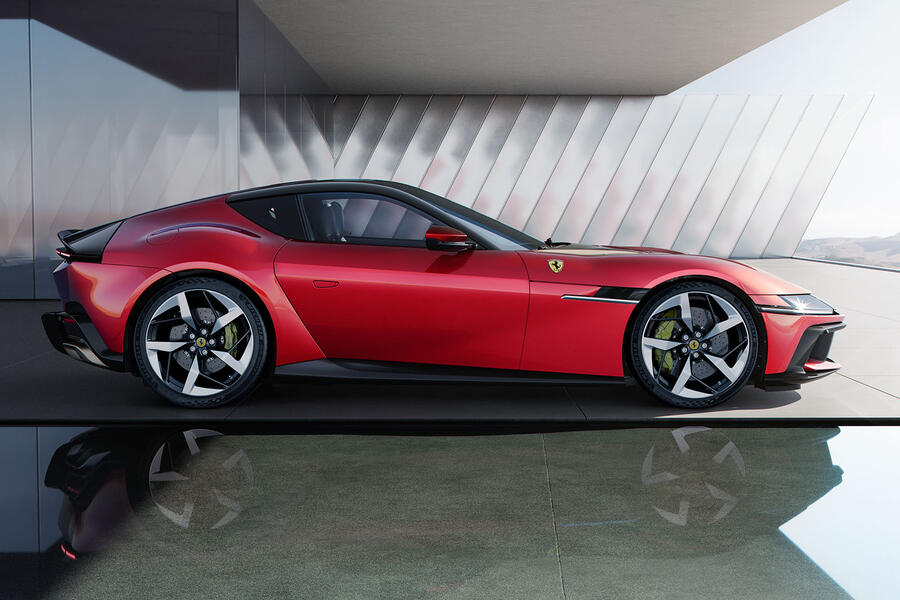
“We are starting a new era – a new design philosophy – with this car,” said Ferrari chief design officer Flavio Manzoni. He added that the 12Cilindri is “a clear departure from the line of the previous generations, especially the 812 Competizione, which was very sculptural, muscular, technical and so on”.
Here, he said, the aim was to “create a cohesive whole, integrating all the technical devices and aerodynamic needs into a clear vision”.
It is a clear evolution of the 812 insofar as it has a low, probing bonnet, muscular haunches and a cab-rear silhouette – all features that nod to its generously sized powerplant – but stylistically it marks a complete departure from its predecessor.
At the front, most obviously, the 12Cilindri is defined by a sharp wraparound band incorporating the headlights. That’s a nod to the legendary Ferrari 365 GTB/4 of 1968, but Manzoni is adamant that this is not a “nostalgic approach” but rather one that shows how Ferrari is “thinking about the future with full respect to the past”.
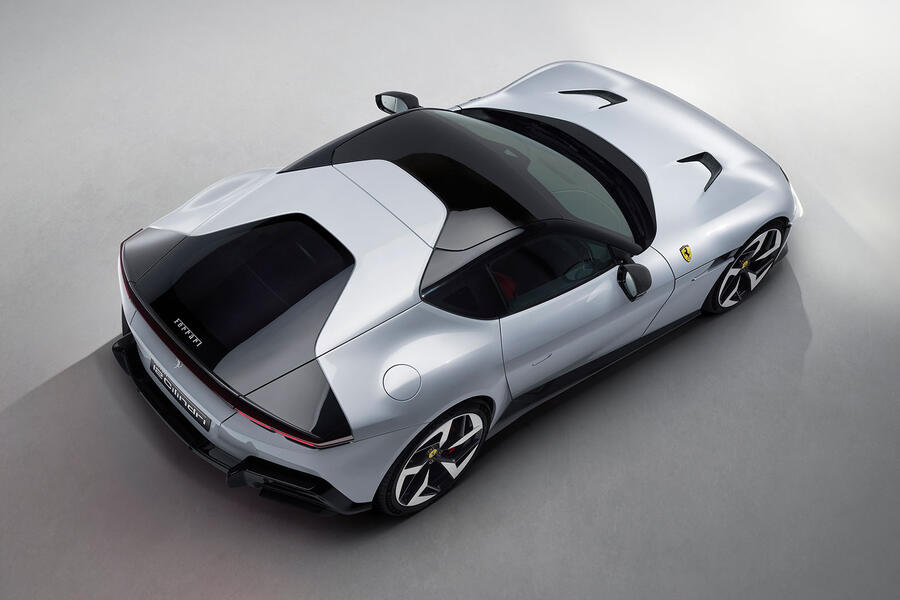
He said: “Every time Ferrari has created an icon, it’s because they wanted to make something new – not something inspired by the past, but by the future.”
Visual drama remains a priority for Manzoni and his team, though. The bonnet opens backwards for “an even more spectacular effect”, the carbonfibre body elements are left unfinished to highlight them more obviously against the car’s paintwork, and the new wheels – each milled from a single block of metal – are an inch bigger for a more purposeful stance.
One highlight of the new car’s design is at the rear, where a pair of flaps have been integrated into the bodywork – one at each side of the delta wing-shaped bootlid – to boost downforce at speed while maximising boot space and to provide a cleaner look when stationary.

Ferrari says that when the 12Cilindri is travelling at 186mph, these flaps need be raised by only 25mm to stabilise the car. Otherwise, though, the 12Cilindri is a comparatively minimalist proposition, compared with the likes of the 812 Competizione, and bosses say this emphasises Ferrari’s ‘form follows function’ approach to design.
“Ferrari never does things that are unuseful or fake,” said Manzoni. “When you look around, most cars in the world have so many fake elements: air intakes, outlets, fake exhausts, fake diffusers… We could never imagine a diffuser based on our stylistic ideas.”
Powertrain
With its outputs boosted to 819bhp and 500lb ft, the ‘F140HD’ V12 can send the 12Cilindri from 0-62mph in just 2.9sec and onwards to a top speed of more than 211mph.
Compared with the 812 Superfast’s engine, the pistons have been lightened by 2%, the camshaft by 3% and the conrods a significant 40%.
Together with the use of Formula 1-derived sliding finger valvetrain followers, shorter manifold tracts and tweaked cam profiles, that has enabled Ferrari to lift the redline from 8900rpm in the Superfast to a screaming 9500rpm.
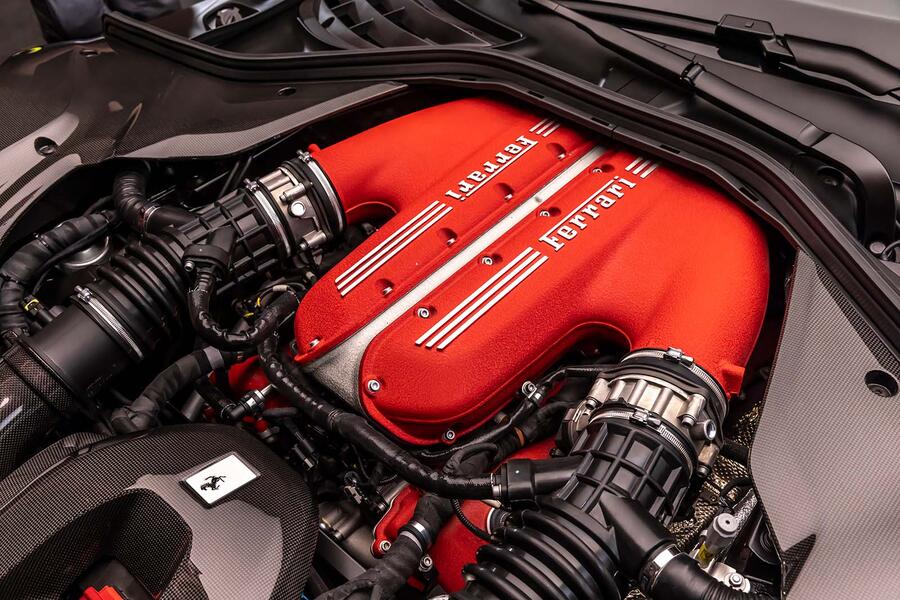
The resulting soundtrack and performance are “the purest expression of Ferrari’s soul”, according to the brand.
Ferrari chief product development officer Gianmaria Fulgenzi said the company decided “some years ago” to replace the 812 with another V12-engined GT, despite legislative uncertainty around combustion cars and in the context of Ferrari’s move towards electrification.
“It was a brave decision,” he told Autocar, “but not too difficult, because we love the V12, we know that our customers love the V12, and our volumes generally are not too high. “So we believe in the possibility of keeping the engine alive in a world where the regulations are changing very fast.”
Chassis
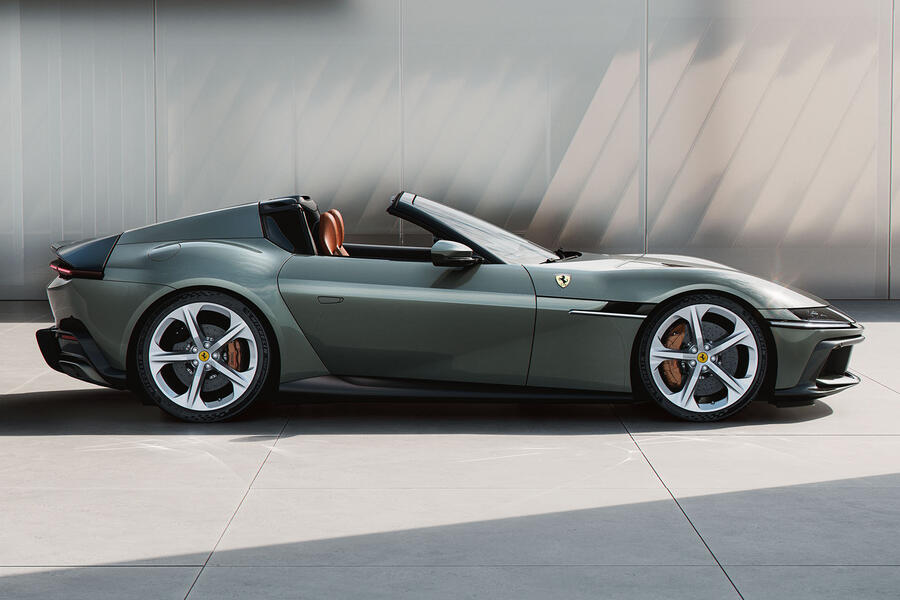
The most obvious and significant structural change for the 12Cilindri is a 20mm reduction in wheelbase to 2700mm.
This allows for an increase in agility and responsiveness compared with the 812, says Ferrari. Cornering behaviour – as well as straight-line stability – is further improved by the fitment of rear-wheel steering as standard, and the introduction of newly developed tyres from Michelin and Goodyear, measuring 275mm wide on the front axle and 315mm at the rear.
Meanwhile, torsional stiffness is said to have been increased by as much as 15% with the reduction of castings in the chassis from 22 to 17. With heavily reinforced sills making up for its lack of a fixed roof, the Spider is said to only concede 1% in rigidity too.
In a first for a V12 Ferrari, the 12Cilindri is equipped with brake-by-wire technology, which allows for varying brake force across all four wheels, while a new ABS-Evo system – taken from the 296 GTB – helps to shorten stopping distances and enhance repeatability of heavy braking.
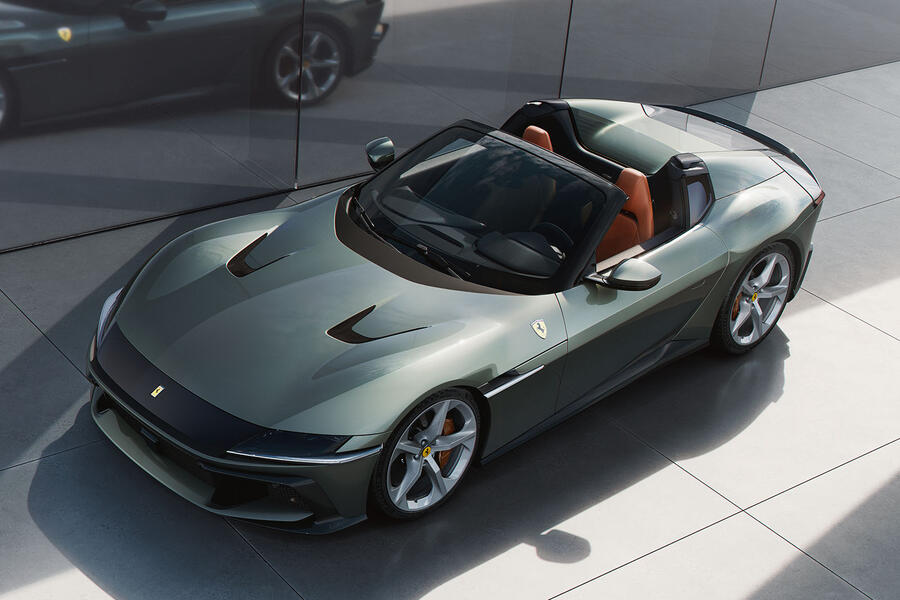
Those systems work in combination with the latest iteration of Ferrari’s Side Slip Control technology – which measures movement, rapidly and intricately, across three dimensions – to maximise traction and performance in all conditions.
Slight increases in weight for the larger wheels, the bonnet and the active rear aero mean that, overall, the 12Cilindri weighs around 35kg more than the 812 Superfast, at 1560kg dry (1620kg for the Spider).
However, Fulgenzi says this a consequence of the efforts Ferrari has made to ensure a broad spread of attributes.
“We have increased a little bit the weight of the car, because we wanted to create two cars in one: an elegant, comfortable, versatile car with performance,” he said. “Generally, the increase in weight is balanced with the increase of the performance of the car.”
Interior
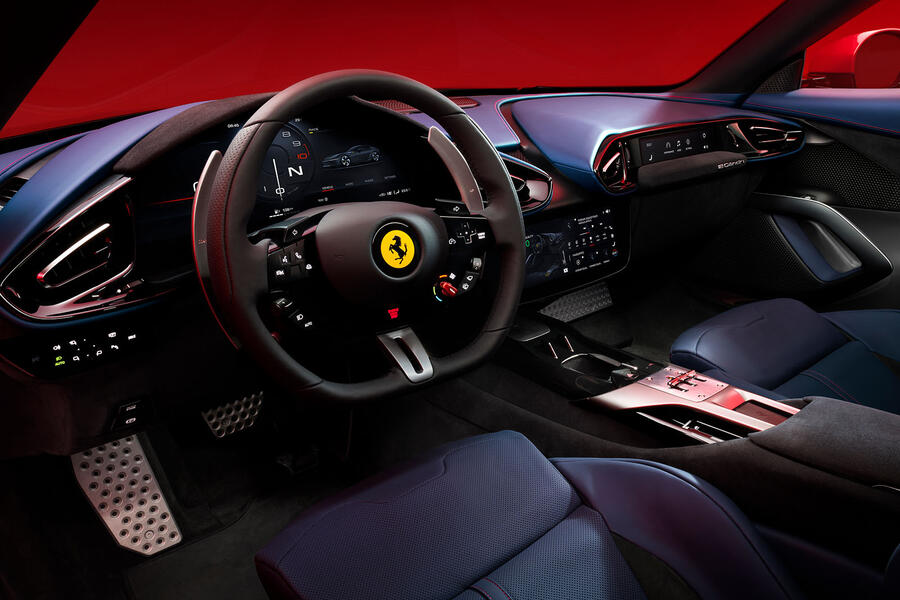
The cabin is arranged in a similar, near-symmetrical format to the Purosangue, with the driver and passenger each cocooned in their own luxuriously trimmed ‘cockpit’ and with their own separate digital display.
Unlike the Purosangue, though, the 12Cilindri features a central infotainment touchscreen, which measures 10.25in in diameter and is equipped with an antifingerprint protective layer.
However, it still does without an in-built navigation system in favour of third-party mapping apps displayed via smartphone mirroring.
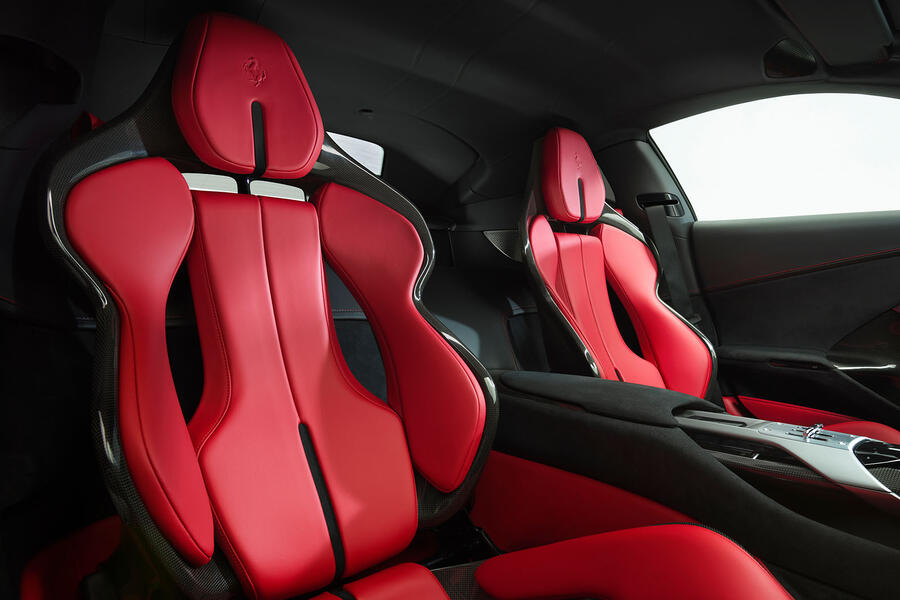
The steering wheel, as with other models in the Ferrari line-up, hosts an array of capacitive controls alongside the traditional manettino drive mode selector, while a row of physical switches has been added to the centre console in the style of Ferrari’s old open-gate manual gear selector. This, said Manzoni, “is the technical jewel of the interior”.
The coupé features a panoramic glass roof as standard, while the Spider’s top can be retracted in just 14sec at vehicle speeds of up to 28mph. The trade-off is a 100-litre reduction in boot space.

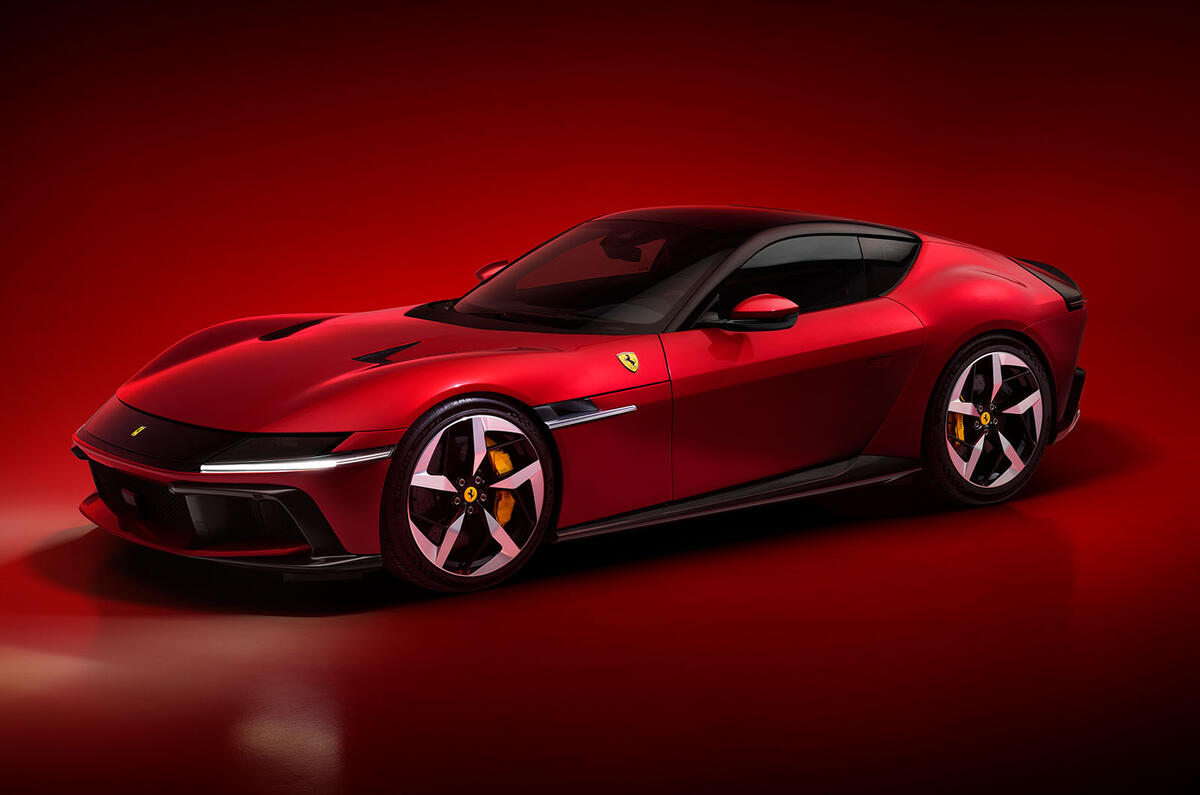
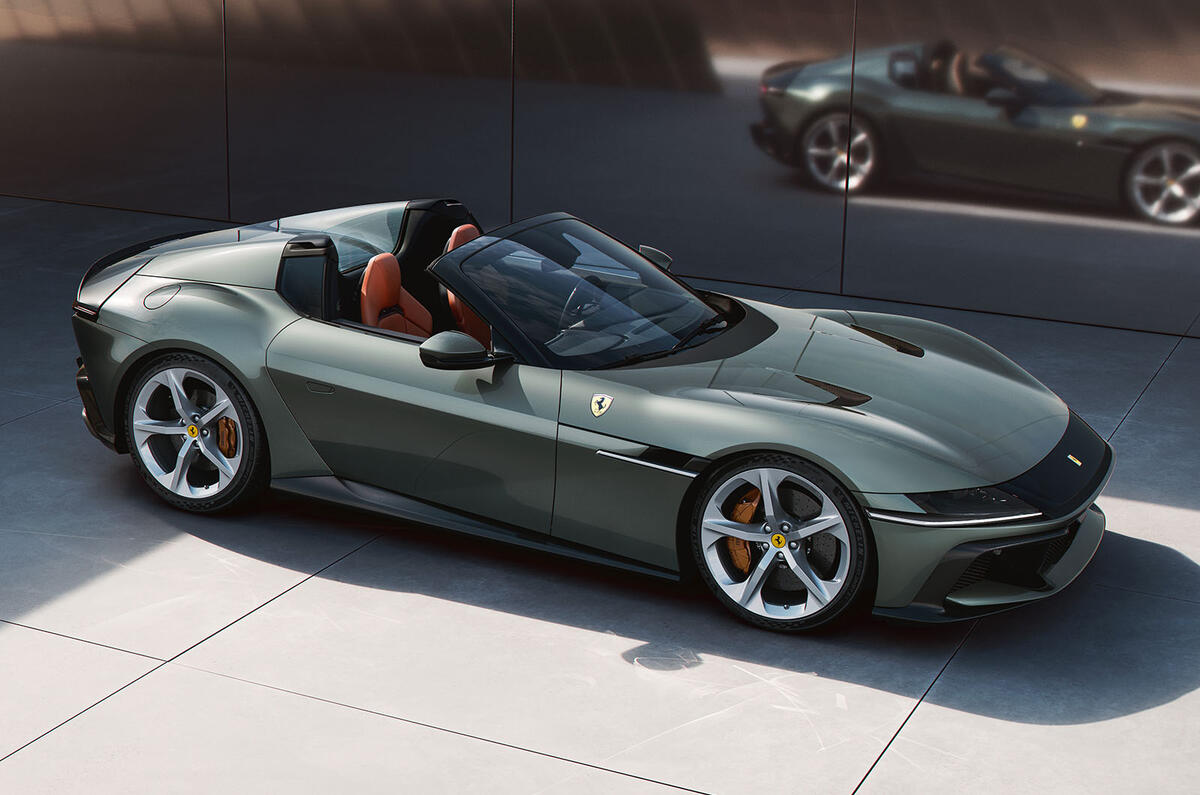
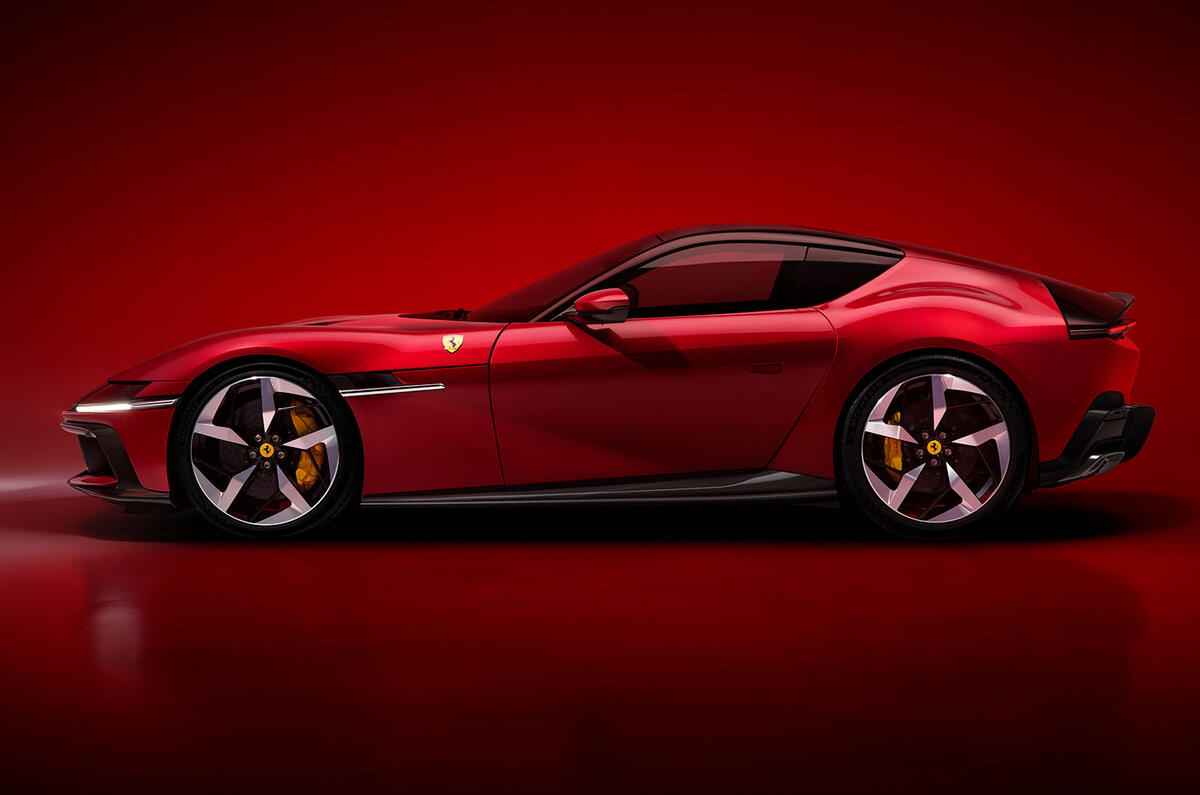
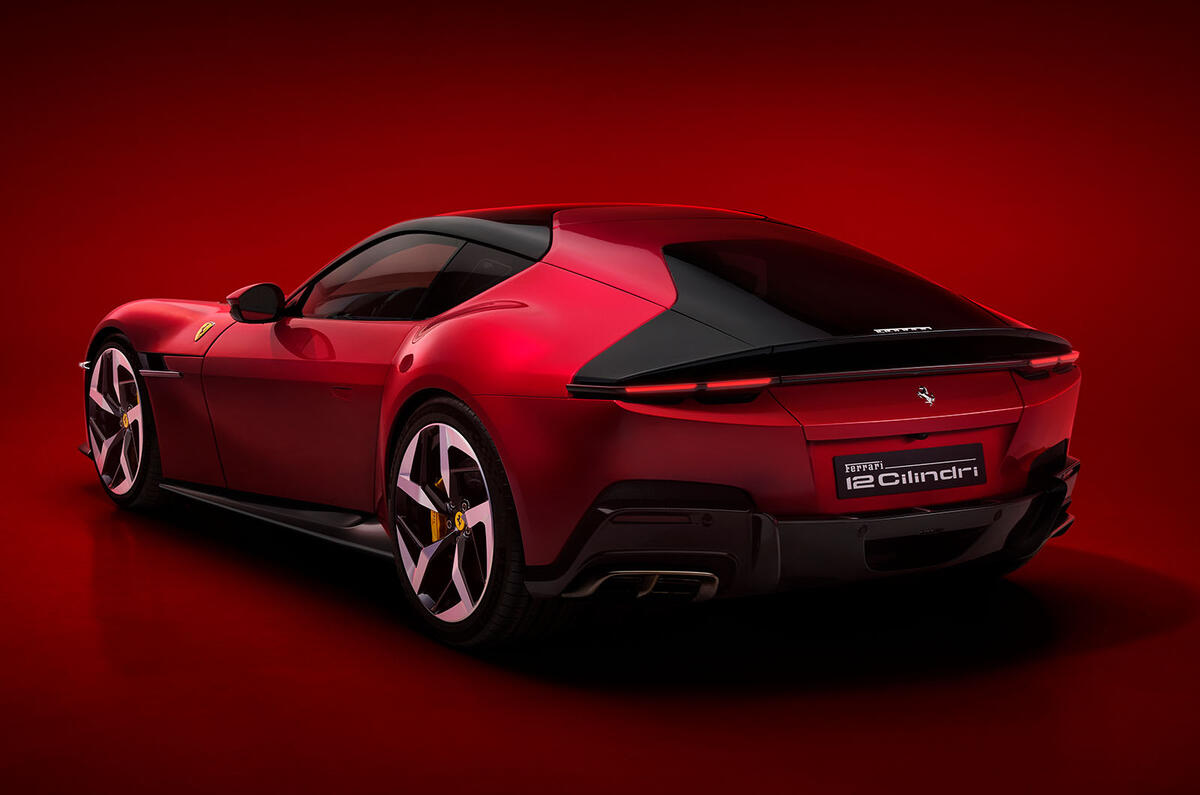

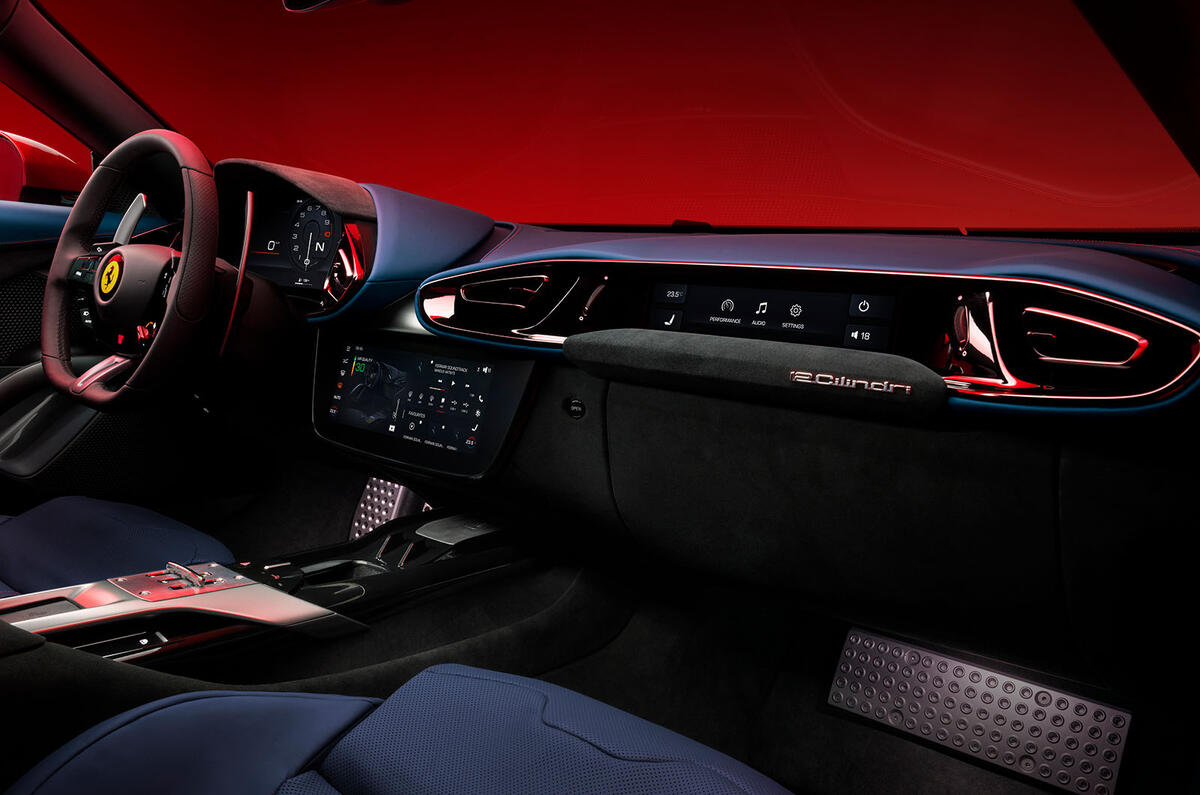
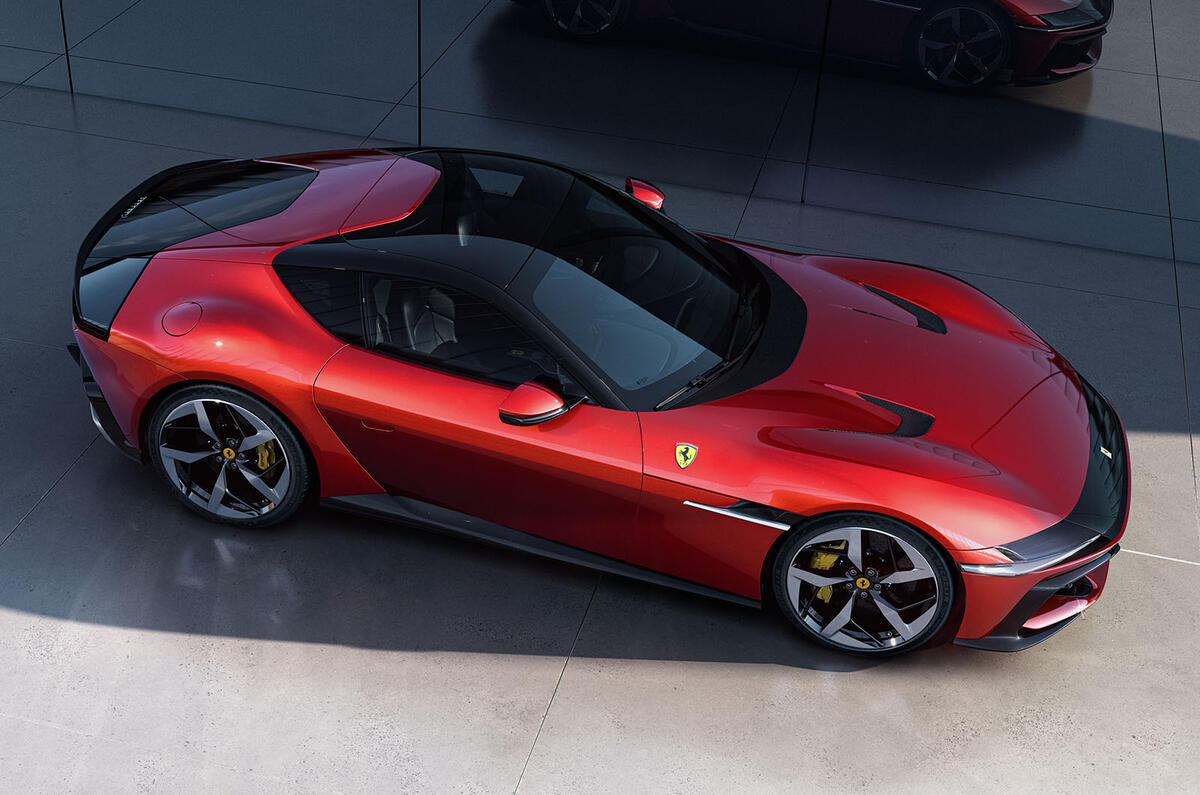
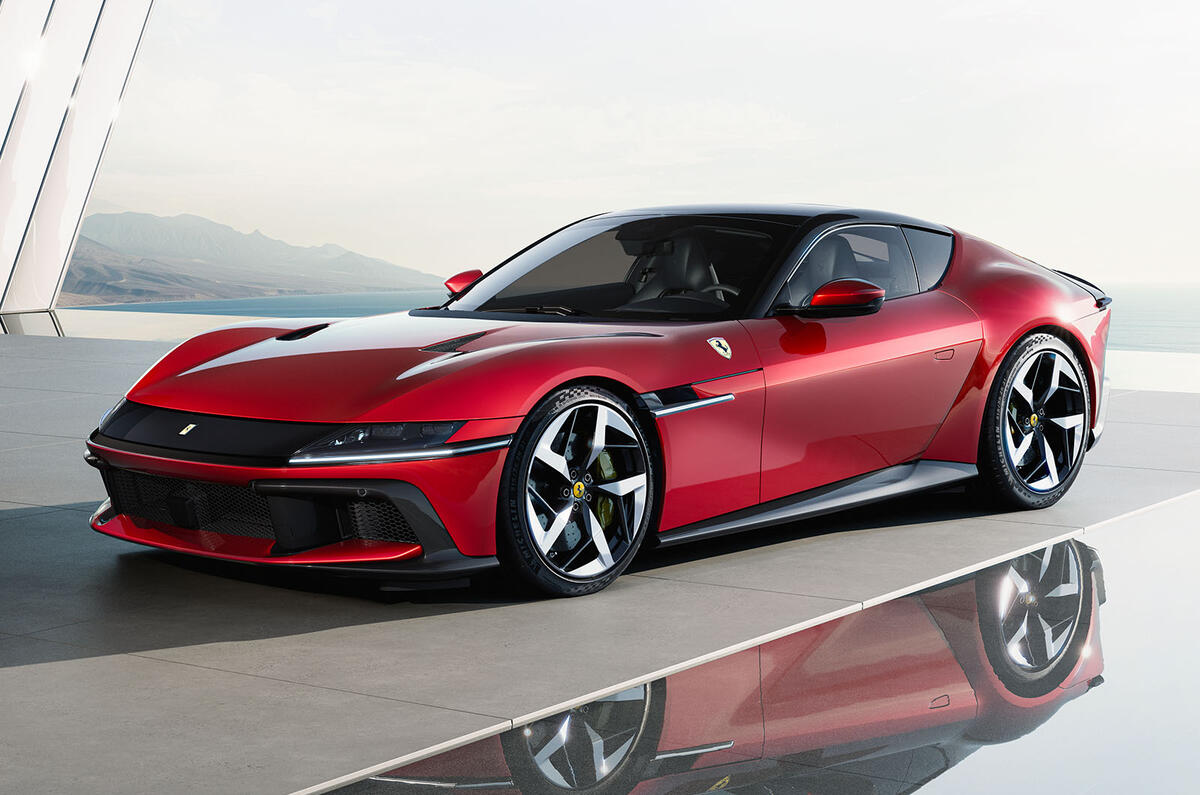
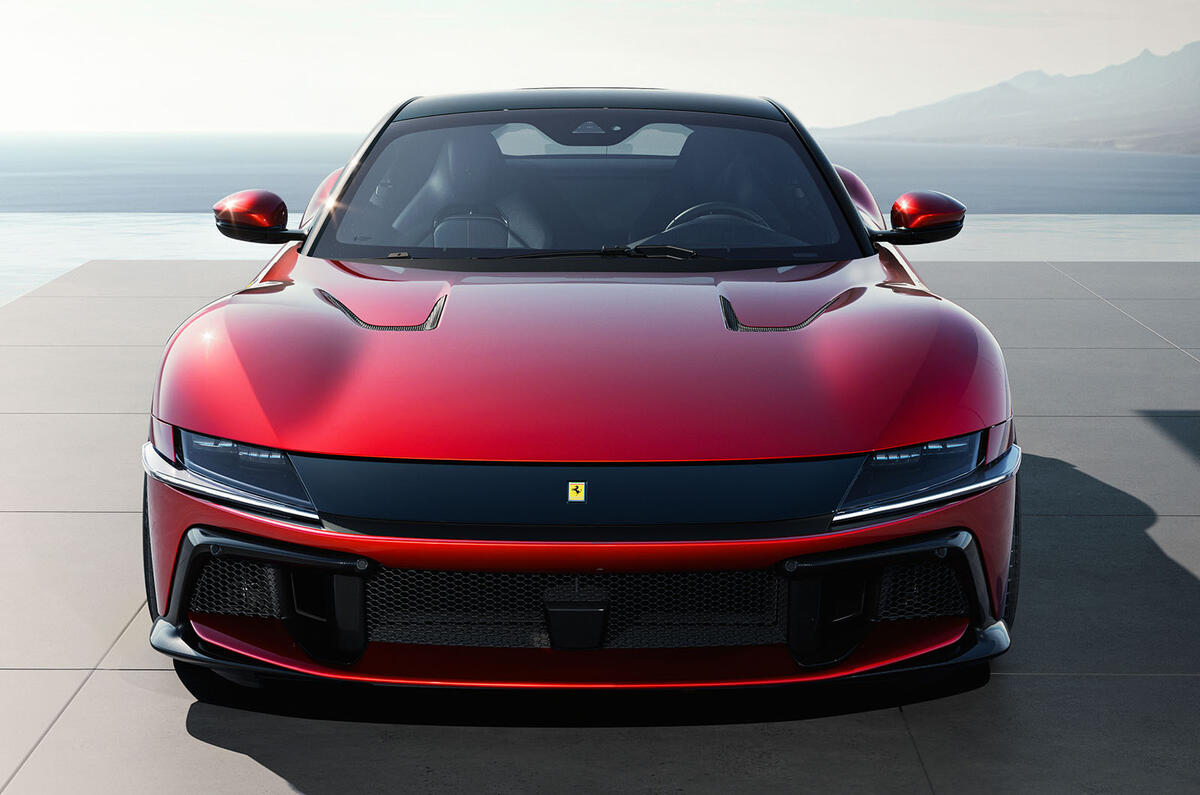
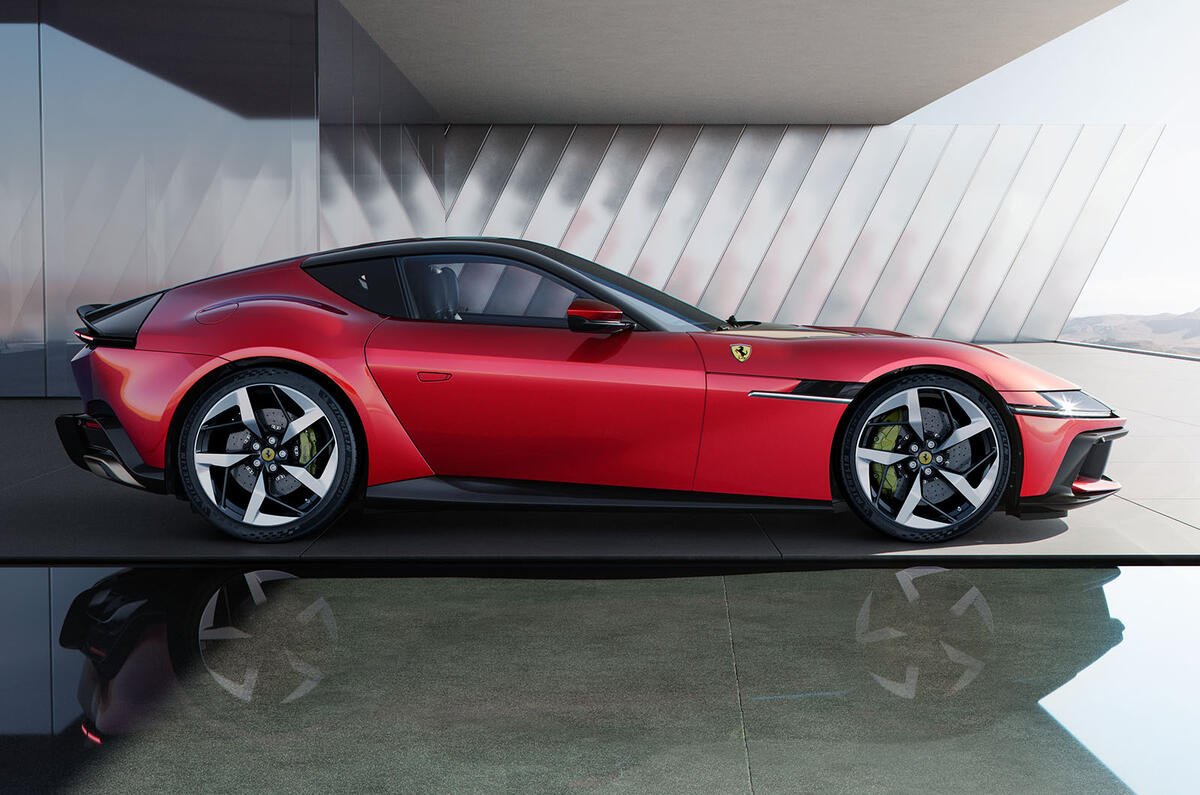
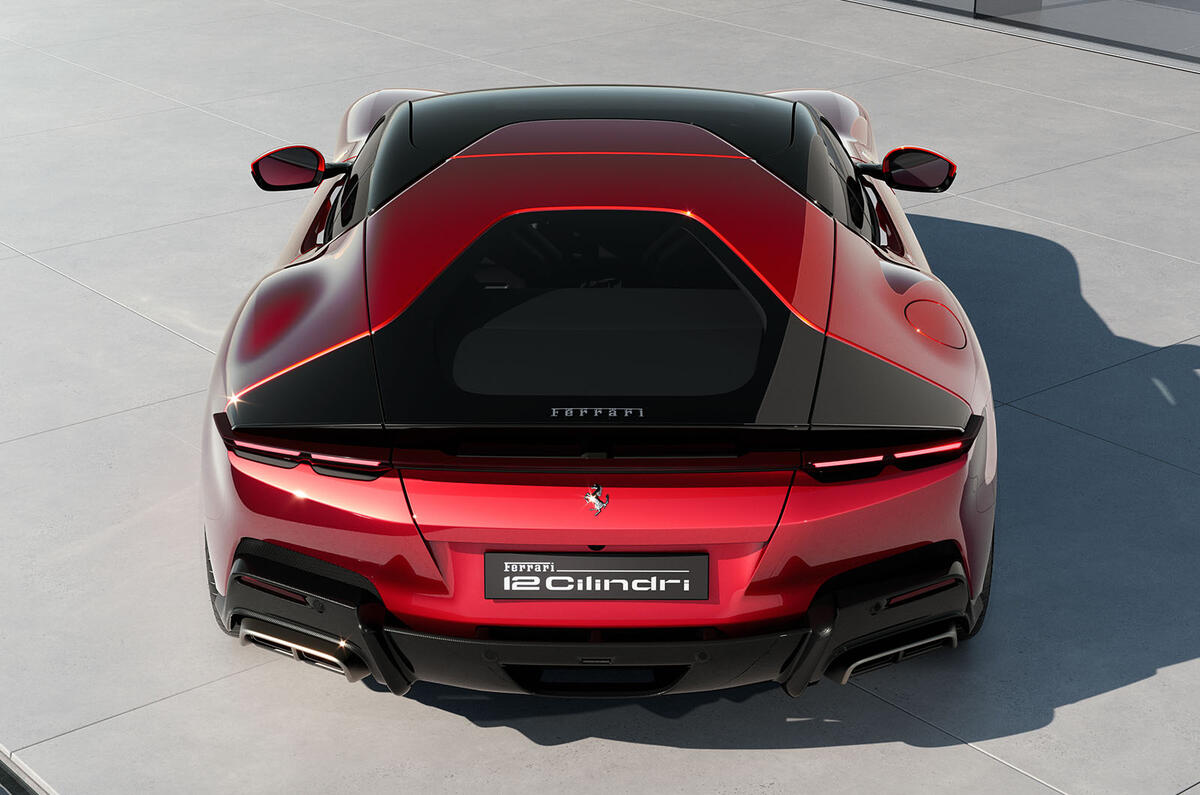
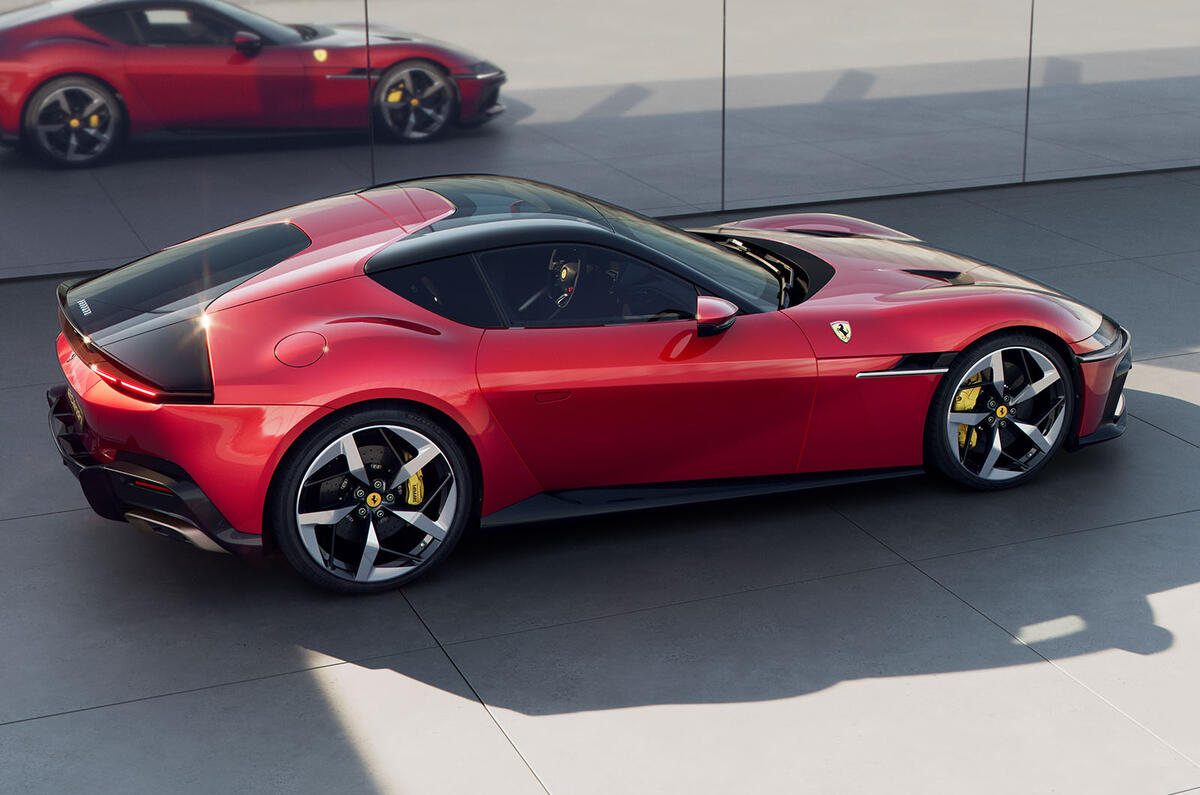
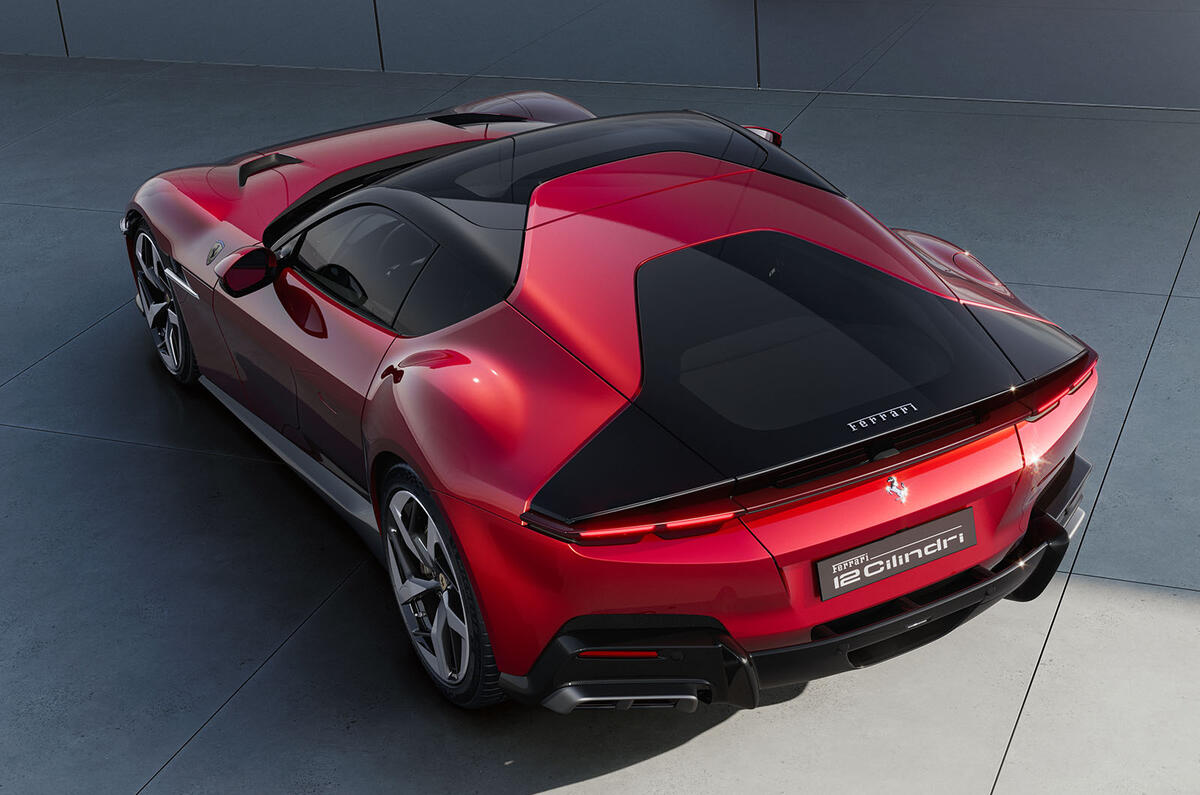
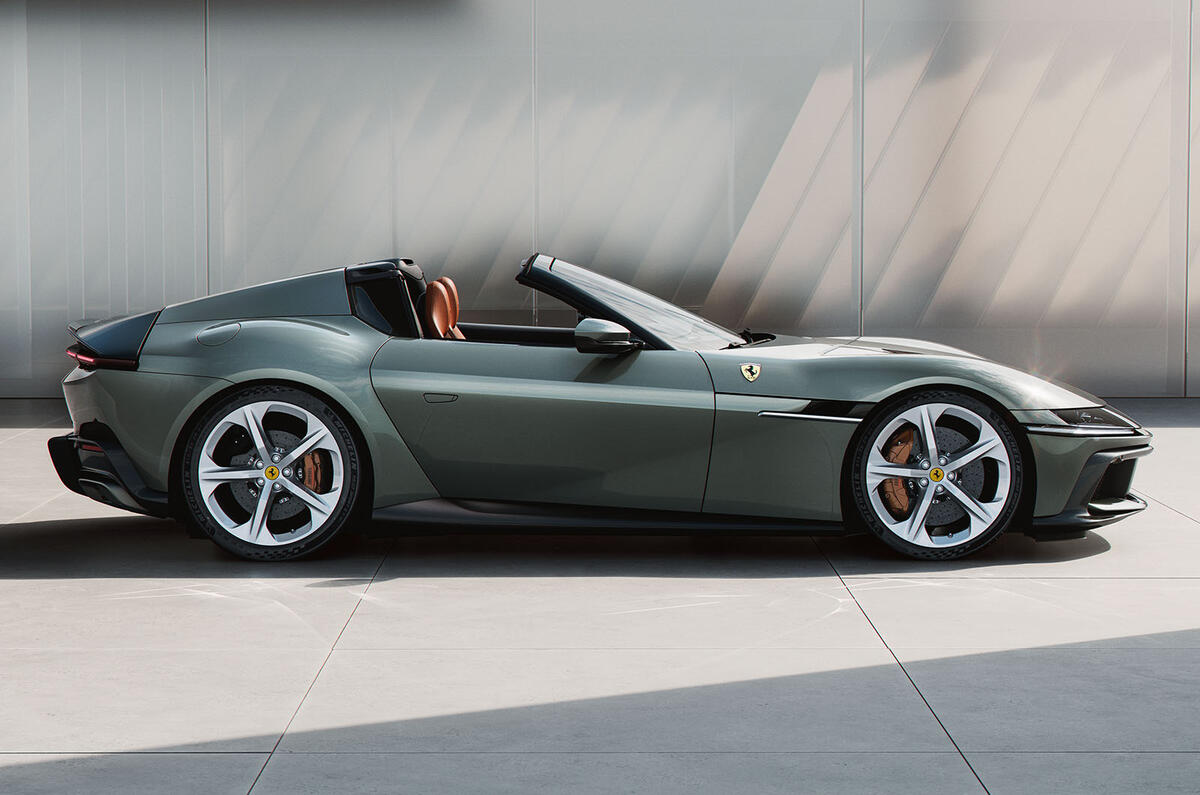
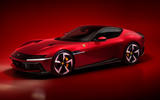

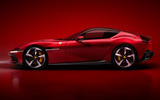
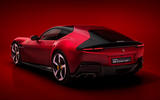

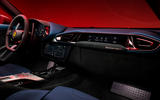
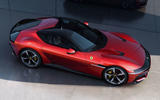
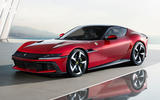
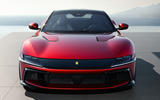
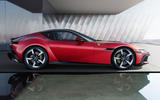
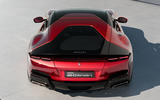
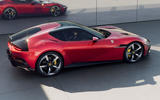

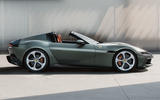






Join the debate
Add your comment
So, we're all having our say about this car, but, if we were in the position of the few who can afford cars like this and have five berth Garage for the others, would you swap your life for theirs?
Even if I could I wouldn't as I hate being ripped off, whether it's £8 or £8,000! They are charging 3 to 10 times the price for extras even compared to a Porsche options list (and anyone who reads Autocar knows the underlying suppliers and tech are the same! Eg massage seats are standard on higher end Kia's, £1,800 on a Porsche or £9,000 on this Ferrari!). Sadly this no longer appeals to me as a car fan, even though I'd love that V12.